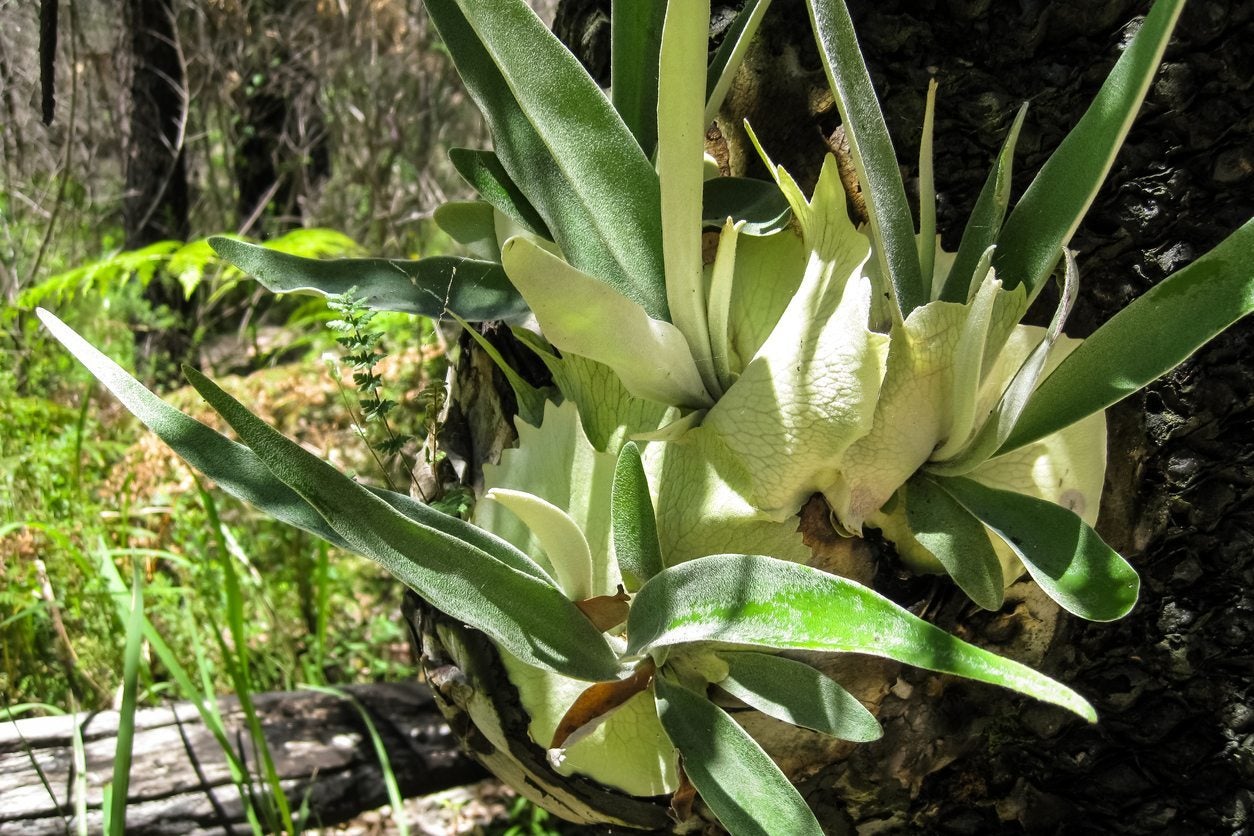Staghorn Fern Varieties: Are There Different Kinds Of Staghorn Ferns

Staghorn ferns are unusual, exotic-looking plants that will definitely attract guests’ attention, whether they’re displayed in the home or outdoors in a warm-climate garden. The plants known as staghorn ferns include the 18 species in the Platycerium genus plus many hybrids and varieties of those species.
Choosing Various Kinds of Staghorn Ferns
Like most bromeliads and many orchids, staghorn ferns are epiphytes. This means that they often grow in trees above the ground and do not need to be in contact with the soil. Instead, they absorb nutrients and moisture from the air and from water or leaves that wash or fall onto their fronds. Many are tropical species, with some types of staghorn fern originating in southeast Asia, Australia, and Pacific islands, and others native to South America or Africa. Due to this, most staghorn fern varieties do need specialized environments and care. Consider your experience level, the humidity level in your home, and the space you have available when selecting a species of staghorn fern. Differences among varieties mean that some are easier than others to grow at home. If you plan to grow outdoors, be sure you have a shaded spot to mount the fern, such as on a tree or on a covered porch. Most species should not be exposed to temperatures below 55 degrees F. (13 C.), but there are several exceptions. Care recommendations vary for different varieties of staghorn fern, so be sure to research what yours needs.
Species and Varieties of Staghorn Fern
Platycerium bifurcatum is probably the most popular staghorn fern for growing at home. It is also the most straightforward to care for and is a good choice for staghorn fern beginners. This species grows quite large, so make sure you have a strong enough mount and enough space to accommodate its eventual size. Unlike most staghorn ferns, this species can survive a brief drop in temperature to 30 degrees F. (-1 C.). Several varieties are available. Platycerium superbum is more difficult to care for and can be hard to find, but it has a striking appearance and is sought after by fern collectors. It produces large, light-green fronds that extend both upward and downward from the mount. These ferns need a high-humidity environment, but they are easily damaged by overwatering. Platycerium veitchii is a silver-colored species from Australian semi-desert regions. It is relatively easy to grow and can tolerate temperatures as low as 30 degrees F. (-1 C.). This species prefers high light levels. Platycerium hillii is another great fern for beginners. It has dark green foliage and is native to Australia and New Guinea. Platycerium angolense is a good choice for warm spots, since it prefers temperatures 80 to 90 degrees F. (27-32 C.) and does not tolerate temperatures below 60 degrees F. (15 C.). However, it is one of the more difficult kinds of staghorn fern to grow. It needs to be watered frequently and requires high humidity.
Gardening tips, videos, info and more delivered right to your inbox!
Sign up for the Gardening Know How newsletter today and receive a free copy of our e-book "How to Grow Delicious Tomatoes".
Ilana Goldowitz Jimenez is a scientific and agricultural writer with a B.S. in Plant Sciences from Cornell University and a PhD in Chemical Biology and Infectious Disease from Harvard University.
-
 Looking For Plants To Give You The Soft And Fuzzies? Try These 5 Fuzzy Leaf Plant Options
Looking For Plants To Give You The Soft And Fuzzies? Try These 5 Fuzzy Leaf Plant OptionsLovers of texture, drama, silver foliage and tactile plants will adore these special sensory garden additions. These fuzzy leaf plant options will leave you all aglow
By Susan Albert
-
 Get Ready For A Summer Of Hummers! Grow These Full Sun Hummingbird Plants and Flowers
Get Ready For A Summer Of Hummers! Grow These Full Sun Hummingbird Plants and FlowersIf you’re lucky enough to enjoy a sunny backyard, make sure you are maxing out on your pollinator opportunities and grow these full sun hummingbird plants and flowers
By Tonya Barnett